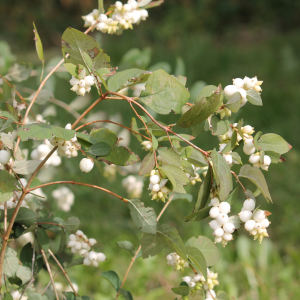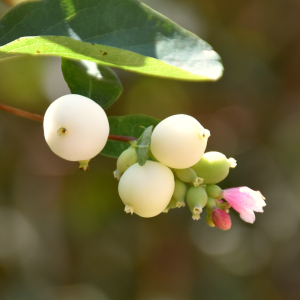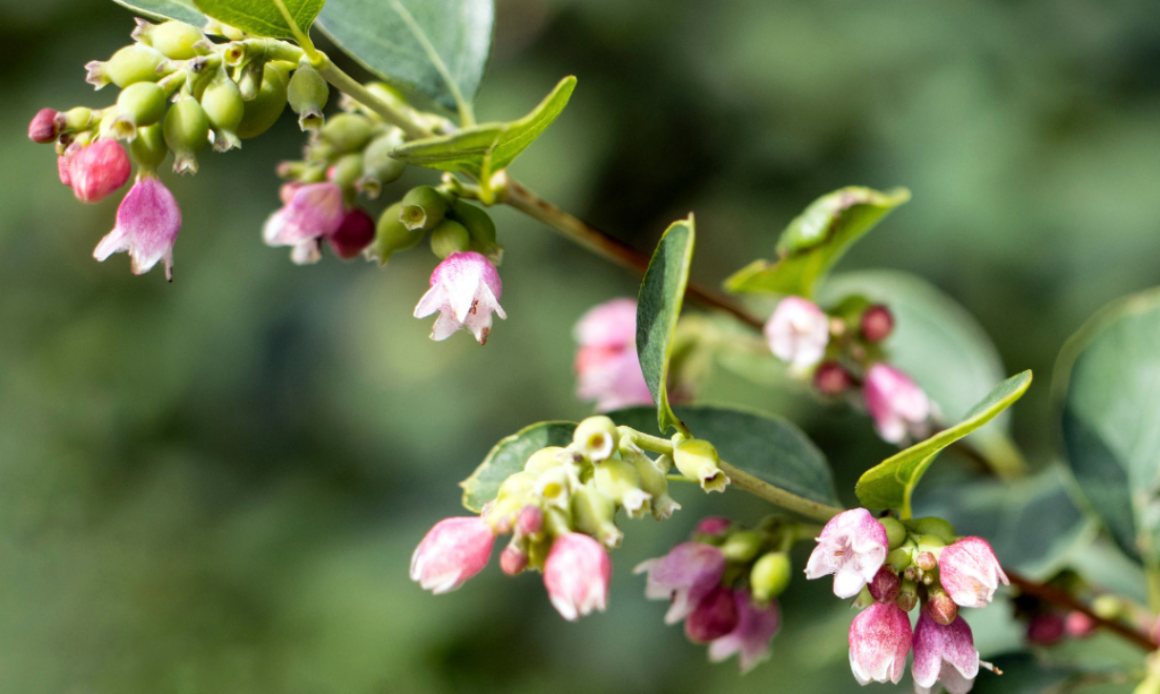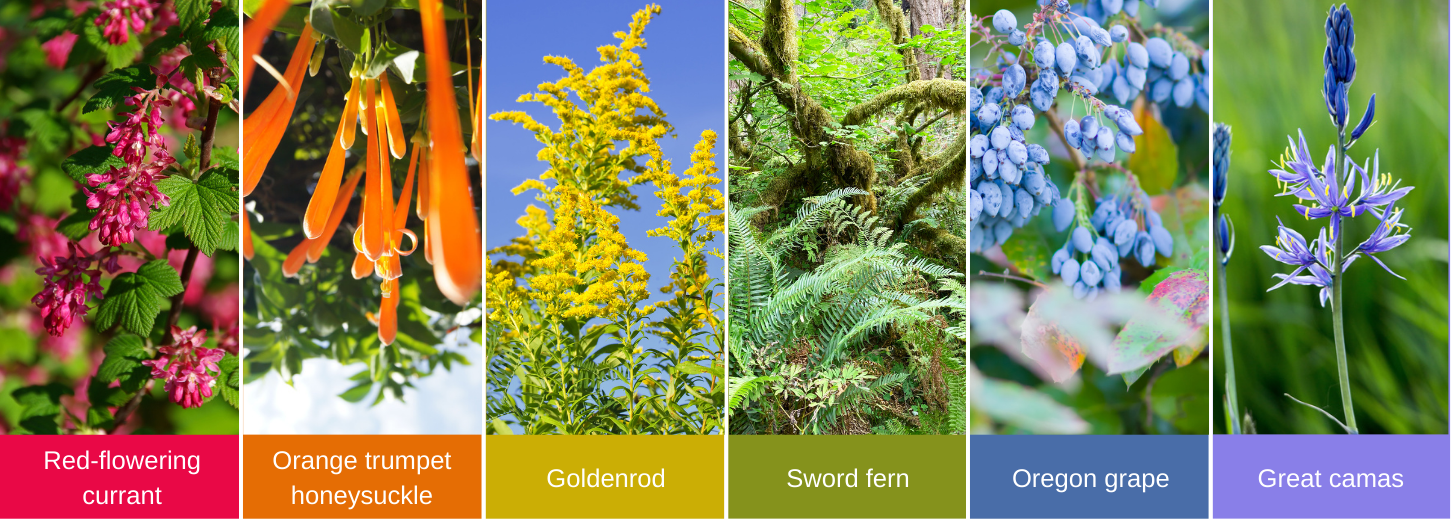Nestled within the green understory of the Clackamas Watershed lies a humble yet crucial native plant: the Snowberry (Symphoricarpos albus). While its name might conjure images of winter wonderlands, the snowberry is an important native plant all year round. As an integral component of the local ecosystem, the Snowberry plays a multifaceted role in promoting biodiversity, supporting wildlife, and enhancing ecological resilience.
The Snowberry’s Ecological Role:
1. Habitat and Shelter: Within the Clackamas Watershed, the Snowberry serves as a vital habitat and shelter for numerous species of birds, mammals, and insects. Its dense, bushy growth provides refuge from predators, nesting sites for birds, and protection for small mammals during harsh weather conditions.

2. Soil Stabilization and Water Quality: With its extensive root system, the Snowberry aids in soil stabilization along riverbanks and slopes, mitigating erosion and reducing the risk of sedimentation in waterways. The Clackamas River is a drinking water source for over 300,000 Oregonians, therefor, maintaining water quality is essential for drinking water quality.

3. Pollinator Support: The Snowberry’s small, bell-shaped flowers attract a variety of pollinators, including bees, butterflies, and hummingbirds. By providing nectar and pollen, it contributes to the overall health and diversity of pollinator populations in the area, essential for the reproduction of numerous plant species.
Cultural and Historical Significance:
Beyond its ecological contributions, the Snowberry holds cultural and historical significance for Indigenous communities in the region. Traditionally, various parts of the plant were utilized for medicinal purposes, ceremonial rituals, and crafting. Its presence in the landscape is a reminder of the deep connection between Native peoples and the land, as well as the importance of preserving traditional ecological knowledge.
Conservation Challenges and Efforts:
Invasive plants such as Himalayan blackberry and English ivy can outcompete native vegetation, including the Snowberry, leading to a decline in its abundance and distribution.
The Clackamas River Basin Council is actively restoring habitats in the watershed and we include Snowberry in our revegetation plans. Our restoration efforts include invasive species removal, planting, and educational outreach to raise awareness about the importance of native plants in maintaining ecosystem health.
Conclusion:

In the intricate web of life within the Clackamas Watershed, every species, no matter how small, plays a critical role in maintaining ecological balance. The Snowberry, with its unassuming presence and invaluable contributions, exemplifies the interconnectedness of all living beings and the importance of preserving native biodiversity. By recognizing and celebrating the significance of the Snowberry, we honor not only the natural world but also the rich cultural heritage of the land and its original inhabitants. Let us embrace and protect this humble yet indispensable native plant, ensuring a vibrant and resilient future for the Clackamas Watershed and all who call it home.


